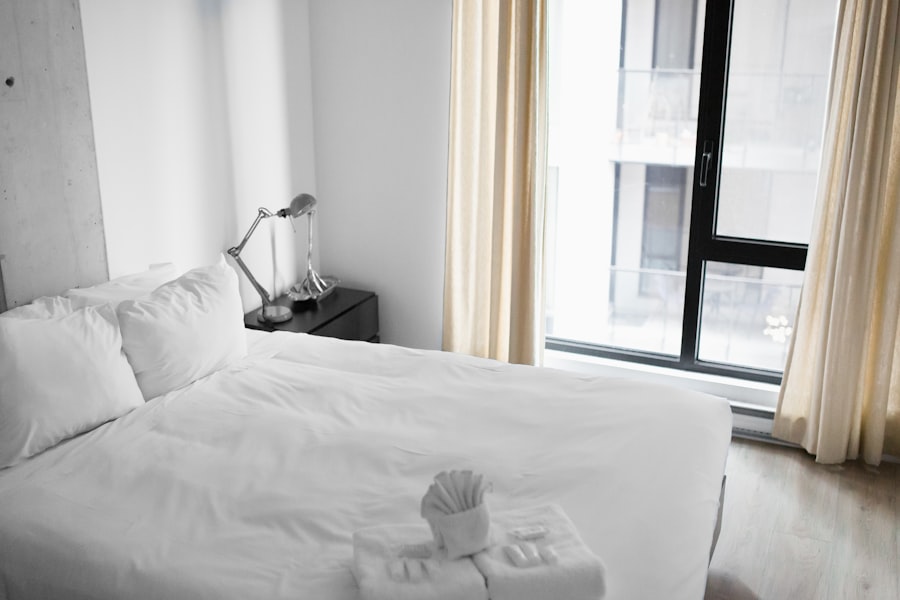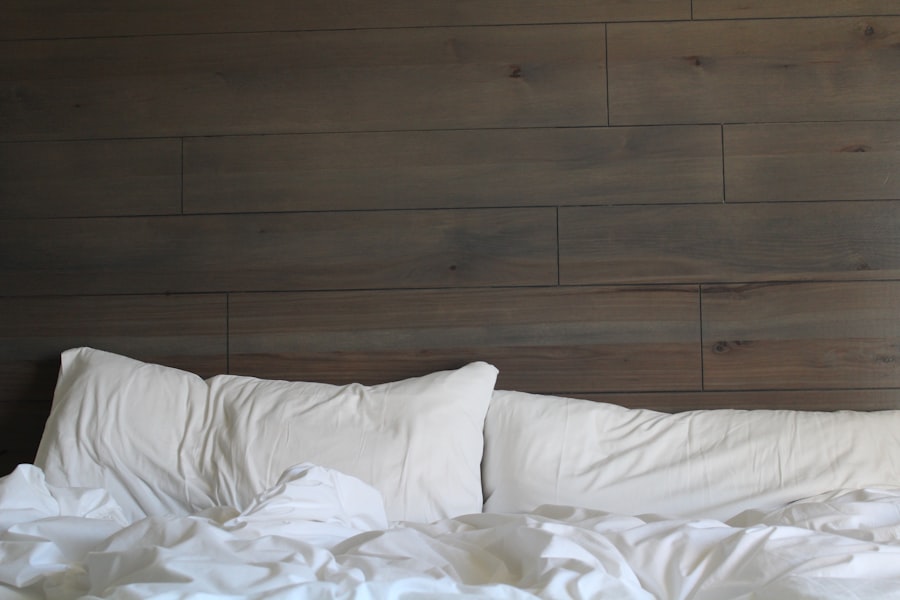Bed bugs, scientifically known as Cimex lectularius, are small, wingless insects that feed on the blood of humans and other warm-blooded animals. These nocturnal pests are typically reddish-brown in color and can grow to about the size of an apple seed. Their flat bodies allow them to hide in the tiniest of crevices, making them particularly adept at evading detection.
Bed bugs are not known to transmit diseases, but their bites can lead to significant discomfort and anxiety for those affected. Understanding their biology and behavior is crucial for effective management and prevention. The spread of bed bugs is often facilitated by human activity.
They can hitch a ride on clothing, luggage, or used furniture, making them a common nuisance in hotels, apartments, and homes. Once they find a suitable environment, they can reproduce rapidly, with a female capable of laying hundreds of eggs in her lifetime. This ability to multiply quickly means that a small infestation can escalate into a larger problem if not addressed promptly.
Awareness of how bed bugs spread is essential for individuals to take proactive measures in preventing infestations.
Key Takeaways
- Bed bugs are small, reddish-brown insects that feed on human blood and can spread easily through infested items and travel.
- Signs of bed bug infestation include itchy welts on the skin, blood stains on sheets, and a musty odor in the room.
- To prevent bed bug infestations, regularly inspect and clean your home, and be cautious when traveling by checking hotel rooms and luggage.
- Home remedies for treating bed bug bites include applying ice packs and over-the-counter anti-itch creams, while medical options may include prescription antihistamines or corticosteroids.
- Getting rid of bed bugs can be done through DIY methods like vacuuming and using bed bug encasements, or by seeking professional help for more severe infestations.
Signs of Bed Bug Infestation: How to Identify Them
Identifying a bed bug infestation can be challenging, as these pests are adept at hiding. However, there are several telltale signs that can help individuals recognize their presence. One of the most common indicators is the appearance of small, red, itchy welts on the skin, often in a linear pattern.
These bites typically occur during the night when bed bugs are most active. Additionally, individuals may notice small blood stains on their sheets or pillowcases, which can occur when a bed bug is crushed after feeding. Another sign of bed bug infestation is the presence of dark spots on bedding or furniture, which are actually excrement left behind by the bugs.
These spots can be mistaken for mold or dirt but are often a clear indication of bed bugs. Furthermore, individuals may detect a musty odor in their living spaces, which is produced by the scent glands of the insects. By being vigilant and recognizing these signs early on, individuals can take action before the infestation worsens.
Preventing Bed Bug Infestations: Tips for Home and Travel

Preventing bed bug infestations requires a combination of vigilance and proactive measures. At home, individuals should regularly inspect their living spaces, particularly areas where they sleep or relax. Vacuuming frequently and washing bedding in hot water can help eliminate any potential eggs or bugs that may have found their way into the home.
It is also advisable to seal any cracks or crevices in walls and furniture where bed bugs might hide. When traveling, individuals should take extra precautions to avoid bringing bed bugs back home. Inspecting hotel rooms upon arrival is crucial; travelers should check the mattress seams, headboards, and furniture for any signs of bed bugs.
Keeping luggage elevated off the floor and using protective covers for bags can also minimize the risk of infestation. By adopting these preventive strategies both at home and while traveling, individuals can significantly reduce their chances of encountering bed bugs.
Treating Bed Bug Bites: Home Remedies and Medical Options
| Treatment Option | Description |
|---|---|
| Topical corticosteroids | Reduce inflammation and itching |
| Antihistamines | Relieve itching and discomfort |
| Calamine lotion | Soothes the skin and reduces itching |
| Oral corticosteroids | Prescribed for severe reactions |
| Antibiotics | Treat secondary skin infections |
| Consulting a doctor | For severe or persistent reactions |
Dealing with bed bug bites can be uncomfortable and distressing. While these bites typically do not require medical attention, there are several home remedies that can alleviate itching and discomfort. Applying a cold compress to the affected area can help reduce swelling and soothe irritation.
Over-the-counter antihistamines may also provide relief from itching and allergic reactions caused by the bites. In more severe cases where bites become infected or lead to significant discomfort, individuals may seek medical treatment. Healthcare professionals may prescribe topical corticosteroids to reduce inflammation or recommend oral antihistamines for more extensive allergic reactions.
It is essential for individuals to monitor their symptoms closely and consult a healthcare provider if they experience unusual reactions or if the bites do not improve with home treatment.
Getting Rid of Bed Bugs: DIY Methods and Professional Help
Eliminating bed bugs from a home can be a daunting task, but it is not impossible. Many individuals opt for DIY methods before seeking professional help. Thoroughly vacuuming infested areas is a critical first step; this should be followed by disposing of the vacuum bag immediately to prevent any bugs from escaping back into the environment.
Washing all bedding and clothing in hot water and drying them on high heat can also kill both bugs and eggs. However, DIY methods may not always be sufficient for severe infestations. In such cases, enlisting the help of pest control professionals may be necessary.
These experts have access to specialized treatments and equipment that can effectively eradicate bed bugs from homes. They often employ a combination of chemical treatments and heat applications to ensure that all life stages of the insects are eliminated. While professional services may come at a cost, they often provide peace of mind and long-term solutions.
Protecting Your Belongings: How to Safeguard Against Bed Bugs

Encasements: A Barrier Against Bed Bugs
One effective strategy is to use protective encasements for mattresses and box springs. These encasements create a barrier that prevents bed bugs from entering or escaping, effectively trapping any existing bugs inside until they die off.
Inspecting and Exercising Caution
Regularly inspecting these encasements for signs of wear or damage is also important. When purchasing second-hand furniture or clothing, individuals should exercise caution. Thoroughly inspecting items before bringing them into the home can help prevent introducing bed bugs into one’s living space.
Additional Precautions
Additionally, storing belongings in sealed plastic containers rather than cardboard boxes can provide an extra layer of protection against these pests. By taking these precautions, individuals can safeguard their belongings and reduce the risk of encountering bed bugs.
There are numerous myths surrounding bed bugs that can lead to confusion and misinformation about these pests. One common misconception is that bed bugs are only found in dirty environments; however, this is far from the truth. Bed bugs can thrive in any setting where humans sleep, regardless of cleanliness.
They are attracted to warmth and carbon dioxide emitted by sleeping individuals rather than dirt or filth. Another prevalent myth is that bed bugs are only found in beds; in reality, they can inhabit various locations within a home, including furniture, carpets, and even electrical outlets. Understanding these facts is crucial for effective prevention and management strategies.
By debunking these myths, individuals can approach bed bug issues with a clearer perspective and take appropriate action when necessary.
The Emotional Toll of Dealing with Bed Bugs: Coping Strategies and Support
The emotional impact of dealing with a bed bug infestation can be significant. Individuals often experience feelings of anxiety, embarrassment, and frustration when faced with these pests. The fear of being judged by others or the stress of potential financial costs associated with treatment can exacerbate these feelings.
It is essential for those affected to acknowledge their emotions and seek support from friends or family members who can provide understanding during this challenging time. Coping strategies such as practicing mindfulness or engaging in stress-relief activities can also be beneficial for managing anxiety related to bed bugs. Joining support groups or online forums where individuals share their experiences can provide comfort and practical advice for those dealing with similar situations.
By addressing both the physical and emotional aspects of a bed bug infestation, individuals can navigate this difficult experience with greater resilience and support.
If you are dealing with a bed bug infestation, it is important to take immediate action to eliminate these pests from your home. One helpful resource to consider is a complete guide for beginners on how to ice fish for panfish, bluegill, crappie, and perch. Just like fishing requires patience and strategy, getting rid of bed bugs also requires a methodical approach to ensure success. By following the tips and techniques outlined in this guide, you can effectively tackle the problem and prevent future infestations.
FAQs
What are bed bugs?
Bed bugs are small, reddish-brown insects that feed on the blood of humans and animals. They are typically active at night and hide in cracks and crevices during the day.
Where are bed bugs commonly found?
Bed bugs can be found in homes, hotels, dormitories, and other places where people sleep or rest. They can hide in mattresses, bed frames, furniture, and other items in the bedroom.
How do bed bugs spread?
Bed bugs can spread through infested furniture, luggage, clothing, and other items. They can also move between adjoining rooms or units in multi-unit buildings.
What are the signs of a bed bug infestation?
Signs of a bed bug infestation include bites on the skin, blood stains on sheets and mattresses, and the presence of bed bug exoskeletons and fecal spots.
How can bed bug infestations be prevented?
To prevent bed bug infestations, it is important to inspect second-hand furniture and clothing before bringing them into the home, keep living areas clean and clutter-free, and regularly inspect for signs of bed bugs.
How can bed bug infestations be treated?
Treatment for bed bug infestations may involve the use of insecticides, heat treatments, or vacuuming and steam cleaning. It is important to consult with a professional pest control company for effective treatment options.






